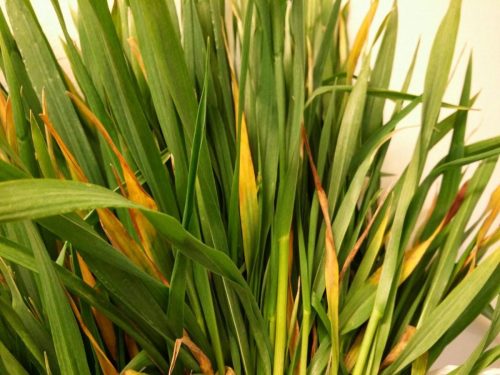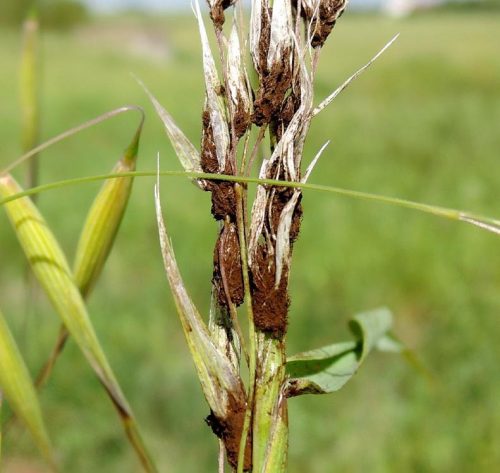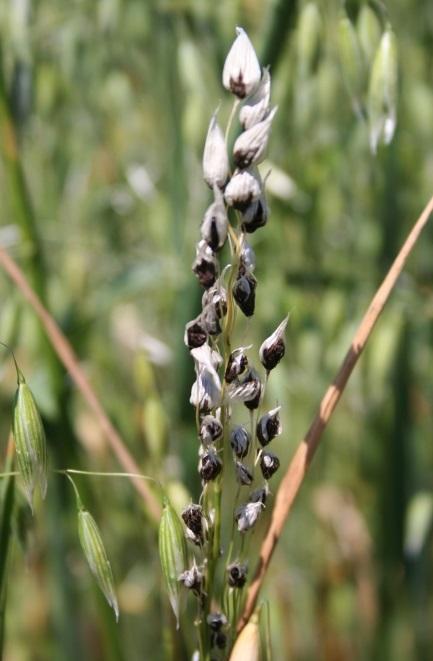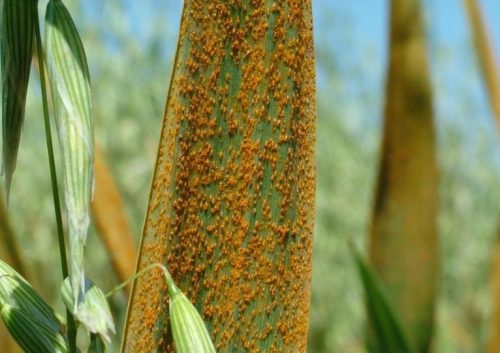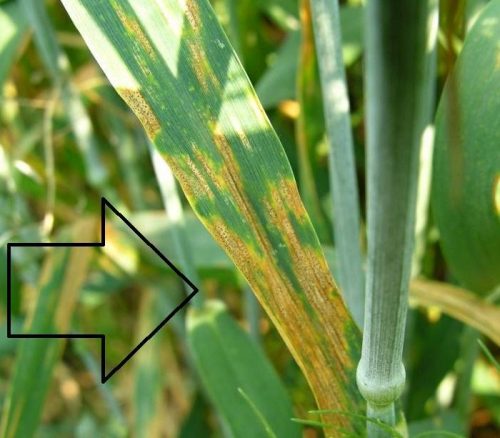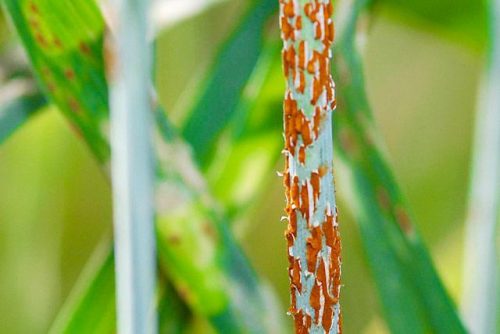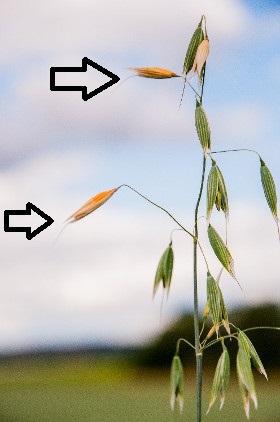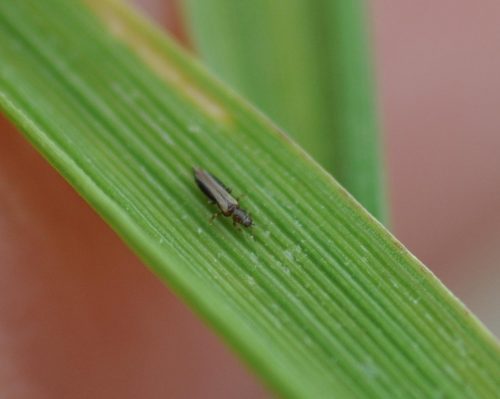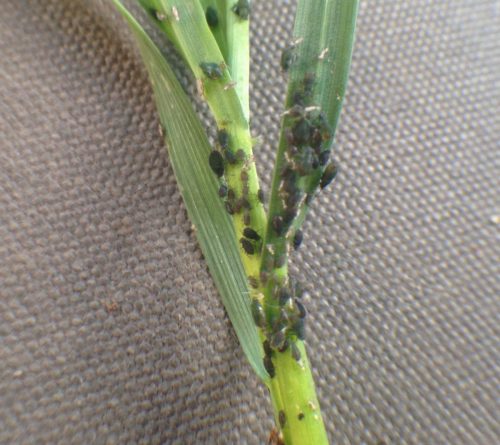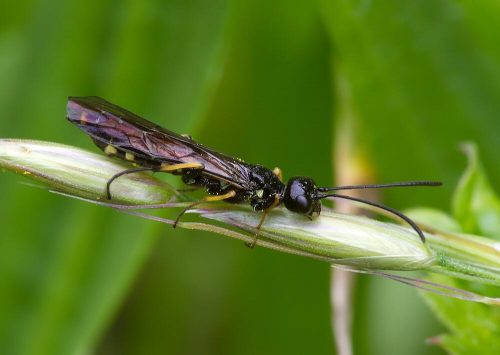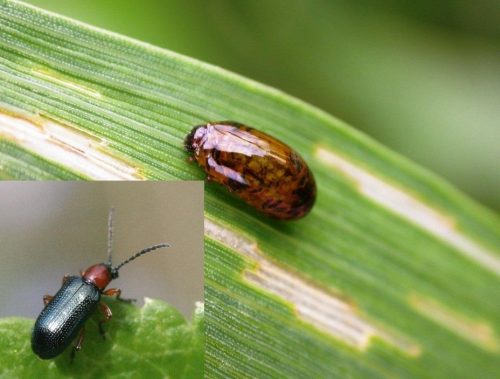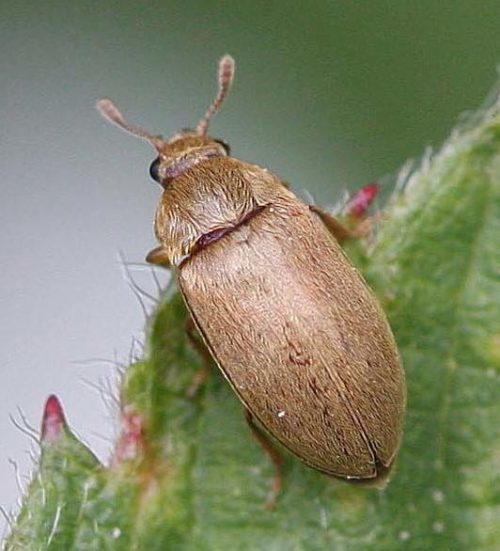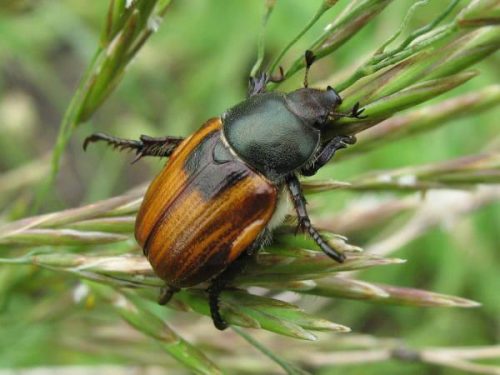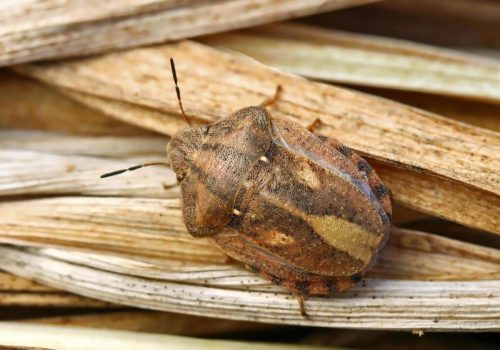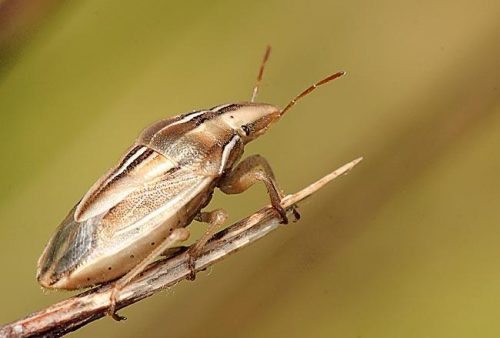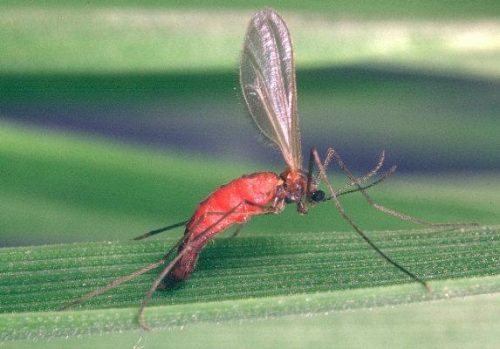Oat treatments, pest and disease control
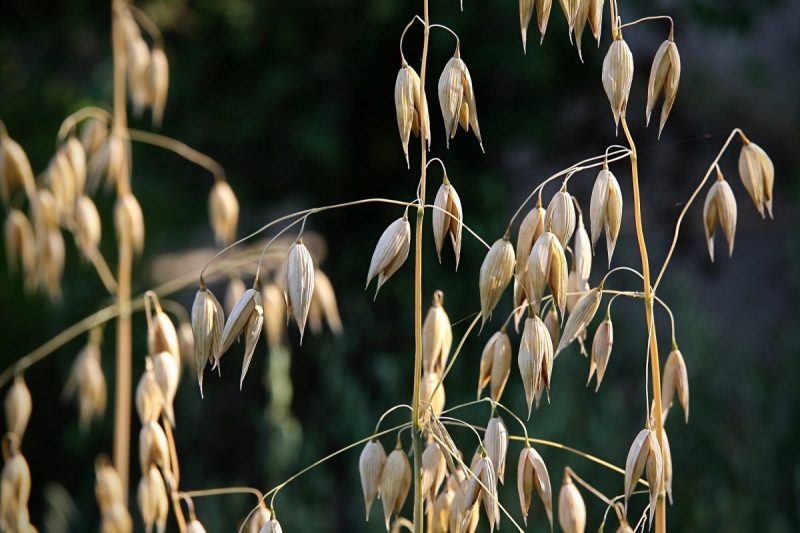
Oat (Avena sativa) is a well-known plant, cultivated all over the world. Even though most of the production is used for animal feed, oats are an important source of nutrients for humans as well. Oat seeds contain calcium, iron, manganese, and zinc. They have a purifying, tonic, calming, and laxative effect. Oats contain a considerable amount of dietary fiber. They stimulate digestion and ensure the proper functioning of the digestive system.
The main diseases of oats
Barley yellow dwarf virus
The attacked plants have a darker color and then turn yellow or even red. The virus attacks the plants in the seedling phase, dwarfing them. This is accompanied by the fact that the spikes no longer develop. If the plants are affected in the tillering phase, they germinate less, and the tips and ribs of the leaves become yellow. The attacked plants develop spikes, but with a large number of sterile spikelets. This virus is transmitted by aphids.
Prevention and control measures:
- destroying the weeds in the crop;
- carrying out specific field works;
- sowing at the optimum time;
- applying insecticides to control aphids;
- cultivating resistant varieties.
Semiloose smut of oats (Ustilago avenae)
The attacked plants can be recognized by the yellow color of the leaf that covers the panicle. The inflorescence of the affected plants develops later, and the spikelets of the panicle are transformed into a black mass of spores. The symptoms of this disease are influenced by the weather conditions. In humid and cold weather, the development of the disease is slowed down, the mass of spores is reinforced, and the panicle is partially destroyed. In hot and dry weather, the disease progresses at a fast pace and the spores are released quickly.
Prevention and control measures:
- cultivating resistant oat varieties;
- treating the seeds with specific fungicides.
Oat covered smut (Ustilago levis)
It is as common as the semi-loose smut of oats. The symptoms are similar, but the oat-covered smut does not attack all the organs of the panicle, but only a part of it. The grains are transformed into a black mass of spores. Finally, the spore mass is released. Then, the spores adhere to other healthy seeds or fall to the ground.
Prevention and control measures:
- treating the seeds with specific fungicides;
- early sowing;
- balanced fertilization to increase plant resistance;
Oat crown rust (Puccinia coronata)
The first symptoms appear between June and July. On the top side of the oat, leaves appear as circular pustules, arranged disorderly. Initially, they are orange and covered with the epidermis. After the epidermis ruptures, the spores are released and the pustules become dusty. At the end of summer, black pustules appear, arranged around the orange pustules.
Prevention and control measures:
- cultivating resistant oat varieties;
- destroying the weeds;
- summer plowing, after harvest, to incorporate the fungi spores into the soil;
- balanced fertilization;
- carrying out treatments with specific fungicides.
Recommended products
-
You can find products on a different store
Change Store -
You can find products on a different store
Change Store -
You can find products on a different store
Change Store -
You can find products on a different store
Change Store -
You can find products on a different store
Change Store -
You can find products on a different store
Change Store -
You can find products on a different store
Change Store -
You can find products on a different store
Change Store -
You can find products on a different store
Change Store -
You can find products on a different store
Change Store -
You can find products on a different store
Change Store -
You can find products on a different store
Change Store -
You can find products on a different store
Change Store -
You can find products on a different store
Change Store -
You can find products on a different store
Change Store -
You can find products on a different store
Change Store -
You can find products on a different store
Change Store -
You can find products on a different store
Change Store -
You can find products on a different store
Change Store -
You can find products on a different store
Change Store -
You can find products on a different store
Change Store -
You can find products on a different store
Change Store -
You can find products on a different store
Change Store -
You can find products on a different store
Change Store
Leaf spot (Pyrenophora avenae)
The characteristic symptoms of the disease manifest on the topside leaves. Small, yellow spots appear on them. The disease progresses and the spots become bigger. Brown stripes appear on the surface of the spots. These develop and the spots become covered with a velvety fuzz. After the attack, the oat leaves turn yellow and dry out. The disease can also attack the spikes. These produce yellow-brown dry seeds that will transmit the infection the following year. Also, the fungi can live on the plant remains from the surface of the soil and cause infections in the following years.
Prevention and control measures:
- keeping the optimum density;
- destroying the weeds;
- a correct crop rotation;
- balanced fertilization;
- using certified seeds, from reliable sources;
- carrying out treatments with specific fungicides.
Powdery mildew (Erysiphe graminis)
The disease appears in spring. On the basal leaves and stems develop white, felt-like spots. The spots become dusty, and on them appear circular formations that represent the fructification of the fungus. The attack can spread quickly and can even attack the spikes. The attacked tissues turn yellow and dry out. The leaves dry out prematurely, the spikes do not grow normally, and the plant produces dry grains. The fungus overwinters on the plant remains from the surface of the soil. Wet autumn weather can cause autumn infections. The occurrence of the disease is favored by excessive fertilization with nitrogen, monoculture, or high density when sowing.
Prevention and control measures:
- burying plant remains through plowing;
- destroying the weeds;
- balanced fertilization;
- cultivating resistant varieties;
- carrying out 1-2 treatments with specific fungicides in the phenophase of straw or spike development.
Recommended products
-
You can find products on a different store
Change Store -
You can find products on a different store
Change Store -
You can find products on a different store
Change Store -
You can find products on a different store
Change Store -
You can find products on a different store
Change Store -
You can find products on a different store
Change Store -
You can find products on a different store
Change Store -
You can find products on a different store
Change Store -
You can find products on a different store
Change Store -
You can find products on a different store
Change Store -
You can find products on a different store
Change Store -
You can find products on a different store
Change Store -
You can find products on a different store
Change Store -
You can find products on a different store
Change Store -
You can find products on a different store
Change Store -
You can find products on a different store
Change Store -
You can find products on a different store
Change Store -
You can find products on a different store
Change Store -
You can find products on a different store
Change Store -
You can find products on a different store
Change Store -
You can find products on a different store
Change Store -
You can find products on a different store
Change Store -
You can find products on a different store
Change Store -
You can find products on a different store
Change Store
Stem rust (Puccinia graminis)
The symptoms of the disease manifest through the appearance of formations called pustules, on all the aerial organs of the plant, especially on the stem. For this reason, it is called stem rust. Unlike other rusts in which the attack begins at the base of the plant, in the case of stem rust, the attack begins at the top of the plant from where it then spreads to the rest of the organs.
Prevention and control measures:
- avoiding the application of excessive nitrogen;
- cultivating resistant oat varieties;
- balanced fertilization;
- carrying out treatments with specific fungicides.
Recommended products
-
You can find products on a different store
Change Store -
You can find products on a different store
Change Store -
You can find products on a different store
Change Store -
You can find products on a different store
Change Store -
You can find products on a different store
Change Store -
You can find products on a different store
Change Store -
You can find products on a different store
Change Store -
You can find products on a different store
Change Store -
You can find products on a different store
Change Store -
You can find products on a different store
Change Store -
You can find products on a different store
Change Store -
You can find products on a different store
Change Store -
You can find products on a different store
Change Store -
You can find products on a different store
Change Store -
You can find products on a different store
Change Store -
You can find products on a different store
Change Store -
You can find products on a different store
Change Store -
You can find products on a different store
Change Store -
You can find products on a different store
Change Store -
You can find products on a different store
Change Store -
You can find products on a different store
Change Store -
You can find products on a different store
Change Store -
You can find products on a different store
Change Store -
You can find products on a different store
Change Store
Fusarium head blight (Gibberella zeae)
This disease appears in the years with hot and dry summers. The disease manifests from the seedling phase when brown spots appear on the stems of plants. Following the attack, the stems rot. When the fungus attacks in the tillering phase, the plants display browning at the base of the stems. They remain small and will form poorly developed brown spikes. The most serious attack manifests during the phase of spike development when the whitening and reddening of the spikes occurs. At the base of the whitened spikelets, a pink mold or orange pads develop, which represent the fructification of the mushroom. The grains are dry and lose their germinative capacity. The transmission of the disease during the vegetative growth period is ensured by the spores and mycelium of the fungus. From one year to the other the transmission is ensured by the infected seeds.
Prevention and control measures:
- balanced fertilization;
- avoiding monoculture or the wheat-corn rotation;
- cultivating resistant varieties;
- treating the seeds before sowing;
- carrying out treatments with specific fungicides in the phase of inflorescence development.
Recommended products
-
You can find products on a different store
Change Store -
You can find products on a different store
Change Store -
You can find products on a different store
Change Store -
You can find products on a different store
Change Store -
You can find products on a different store
Change Store -
You can find products on a different store
Change Store -
You can find products on a different store
Change Store -
You can find products on a different store
Change Store -
You can find products on a different store
Change Store -
You can find products on a different store
Change Store -
You can find products on a different store
Change Store -
You can find products on a different store
Change Store -
You can find products on a different store
Change Store -
You can find products on a different store
Change Store -
You can find products on a different store
Change Store -
You can find products on a different store
Change Store -
You can find products on a different store
Change Store -
You can find products on a different store
Change Store -
You can find products on a different store
Change Store -
You can find products on a different store
Change Store -
You can find products on a different store
Change Store -
You can find products on a different store
Change Store -
You can find products on a different store
Change Store -
You can find products on a different store
Change Store
The main pests of oats
Oat thrips (Stenothrips graminum)
It produces two generations once every two years and overwinters in the adult stage in the soil at a depth of 30-50 cm. This species attacks a number of spontaneous species as well as cultivated species. Following the attack, the plants display discoloration spots on the leaves and on the elements of the panicle. Also, the spikelets become sterile and the grains are deformed or dry.
Control methods:
- a correct crop rotation;
- sowing at the optimum time;
- summer plowing;
- applying treatments when there are more than 8 adult insects on a plant.
Recommended products
-
You can find products on a different store
Change Store -
You can find products on a different store
Change Store -
You can find products on a different store
Change Store -
You can find products on a different store
Change Store -
You can find products on a different store
Change Store -
You can find products on a different store
Change Store -
You can find products on a different store
Change Store -
You can find products on a different store
Change Store -
You can find products on a different store
Change Store -
You can find products on a different store
Change Store -
You can find products on a different store
Change Store -
You can find products on a different store
Change Store -
You can find products on a different store
Change Store -
You can find products on a different store
Change Store -
You can find products on a different store
Change Store -
You can find products on a different store
Change Store -
You can find products on a different store
Change Store -
You can find products on a different store
Change Store -
You can find products on a different store
Change Store -
You can find products on a different store
Change Store -
You can find products on a different store
Change Store -
You can find products on a different store
Change Store -
You can find products on a different store
Change Store -
You can find products on a different store
Change Store
Wheat aphid (Schizaphis graminum)
It produces 15-20 generations per year and overwinters in the egg stage on oats or on spontaneous species. The adults and larvae colonize the leaves and stems, where they suck the fluid from the tissues. The attacked leaves have red spots, curl up, and then dry. The strong attacks in autumn determine the drying of the plants, and during the grain development, it determines the decrease in production.
Prevention and control measures:
- sowing at the optimum time is recommended;
- destroying weeds;
- carrying out treatments when there are more than 10 insects on a plant.
Recommended products
-
You can find products on a different store
Change Store -
You can find products on a different store
Change Store -
You can find products on a different store
Change Store -
You can find products on a different store
Change Store -
You can find products on a different store
Change Store -
You can find products on a different store
Change Store -
You can find products on a different store
Change Store -
You can find products on a different store
Change Store -
You can find products on a different store
Change Store -
You can find products on a different store
Change Store -
You can find products on a different store
Change Store -
You can find products on a different store
Change Store -
You can find products on a different store
Change Store -
You can find products on a different store
Change Store -
You can find products on a different store
Change Store -
You can find products on a different store
Change Store -
You can find products on a different store
Change Store -
You can find products on a different store
Change Store -
You can find products on a different store
Change Store -
You can find products on a different store
Change Store -
You can find products on a different store
Change Store -
You can find products on a different store
Change Store -
You can find products on a different store
Change Store -
You can find products on a different store
Change Store
European wheat stem sawfly (Cephus pygmaeus)
It is a polyphagous species that also attacks barley. It produces one generation per year and overwinters in the larval stage in the plant remains on the surface of the soil. The adults appear between May and June and lay their eggs near the internode under the spike. After hatching, the larva gnaws the contents of the straw. The spikes no longer grow and turn yellow. Precipitation and wind can cause the straw to break and the spikes to fall.
Prevention and control measures:
- deep plowing;
- a correct crop rotation;
- carrying out treatments with specific insecticides.
Oat leaf beetle (Lema melanopa)
It produces one generation a year and overwinters in the adult stage in the foliage of roadside grasses, hedges, forests, etc. Adults usually appear in the second decade of April and lay eggs on the topside of the leaves, close to the base, parallel to the main rib. The adults gnaw the leaves, piercing both the epidermis and the parenchyma, while the larvae consume the upper epidermis and parenchyma, leaving the lower epidermis intact. In case of a strong attack, the whole foliage acquires the appearance of transparent membranes.
Prevention and control measures:
- carrying out treatments if there are 10 adults or 250 larvae per square meter.
Recommended products
-
You can find products on a different store
Change Store -
You can find products on a different store
Change Store -
You can find products on a different store
Change Store -
You can find products on a different store
Change Store -
You can find products on a different store
Change Store -
You can find products on a different store
Change Store -
You can find products on a different store
Change Store -
You can find products on a different store
Change Store -
You can find products on a different store
Change Store -
You can find products on a different store
Change Store -
You can find products on a different store
Change Store -
You can find products on a different store
Change Store -
You can find products on a different store
Change Store -
You can find products on a different store
Change Store -
You can find products on a different store
Change Store -
You can find products on a different store
Change Store -
You can find products on a different store
Change Store -
You can find products on a different store
Change Store -
You can find products on a different store
Change Store -
You can find products on a different store
Change Store -
You can find products on a different store
Change Store -
You can find products on a different store
Change Store -
You can find products on a different store
Change Store -
You can find products on a different store
Change Store
Cereal ground beetle (Zabrus tenebrioides)
It produces one generation a year and overwinters in the larval stage in the soil. It resumes its activity immediately after the snow melts. Adults feed on the flowers and grains in different stages of ripening. The larvae feed only on the aerial parts of the plants, never on the roots. They attack the leaves, pull them inside the galleries dug in the soil, and tear them apart. The attacked plants are completely destroyed.
Prevention and control measures:
- carrying out treatments with specific insecticides.
Shining leaf chafer (Anisoplia sp.)
It produces a generation once every two years and overwinters in the larval stage. The adults of these species feed on the ovaries of the flowers and the grains in the milk or dough ripeness stage. Following the attack, the grains are partially or completely destroyed. The larvae are not harmful.
Prevention and control measures:
- a correct crop rotation;
- carrying out treatments when there are more than five adult insects per square meter.
Sunn pest (Eurygaster sp.)
It produces one generation a year and overwinters in the adult stage in the foliage of forests or in other places sheltered from the weather. Adults appear in spring when temperatures exceed 9° C. After copulation, they lay their eggs on the plant’s aerial organs. The adults and larvae feed on the intracellular fluid of leaves, stems, spikes, and grains of barley. When the attack takes place on the spike, the part above the sting turns white and no longer forms grains. The grains attacked in the milk-wax phase shrivel up.
Prevention and control measures:
- carrying out treatments with specific insecticides.
Recommended products
-
You can find products on a different store
Change Store -
You can find products on a different store
Change Store -
You can find products on a different store
Change Store -
You can find products on a different store
Change Store -
You can find products on a different store
Change Store -
You can find products on a different store
Change Store -
You can find products on a different store
Change Store -
You can find products on a different store
Change Store -
You can find products on a different store
Change Store -
You can find products on a different store
Change Store -
You can find products on a different store
Change Store -
You can find products on a different store
Change Store -
You can find products on a different store
Change Store -
You can find products on a different store
Change Store -
You can find products on a different store
Change Store -
You can find products on a different store
Change Store -
You can find products on a different store
Change Store -
You can find products on a different store
Change Store -
You can find products on a different store
Change Store -
You can find products on a different store
Change Store -
You can find products on a different store
Change Store -
You can find products on a different store
Change Store -
You can find products on a different store
Change Store -
You can find products on a different store
Change Store
Bishop’s Mitre (Aelia sp.)
It produces one generation a year and overwinters in the adult stage in the foliage of forests or in other places sheltered from the weather. Adults appear in spring and lay their eggs on the plant’s aerial organs. The adults and larvae feed on the intracellular fluid of leaves, stems, spikes, and grains. When the attack takes place on the spike, the part above the sting turns white and no longer develops grains. The grains attacked in the milk-wax phase shrivel up.
Prevention and control measures:
- carrying out treatments with specific insecticides.
Saddle gall midge (Haplodiplosis marginata)
It produces one generation per year and overwinters in the larval stage in the soil. At the end of April – beginning of May, the larvae come to the surface of the soil and pupate. Adults appear after 4-5 days and lay their eggs on the foliar limb of the top leaves. The eggs and larvae are sensitive to dryness. After hatching, the larvae penetrate under the sheath of the leaves where they remain attached. The attacked plants have the sheath of the leaf swollen at the place where the larvae are. Elongated swellings with a strongly deepened middle where the larvae feed can also be observed. In the attacked areas, the straw has the fluid-conducting tissues destroyed. This slows down the growth and spike development, leading to premature ripening, reducing the number of grains in the spike.
Prevention and control measures:
- carrying out treatments with specific insecticides if there are more than 5-6 larvae on a plant.














































































































































































































































































































































































































































